An organized classroom is a place where students can focus, feel appreciated, and navigate their learning environment with ease. Setting up organization systems that can be maintained by you and your students is essential to creating an organized space that lasts. This is especially true for spaces in your classroom that receive heavy use on a daily basis, or have many moving parts, like your math manipulatives and math games.
This post includes affiliate links for which I may make a small commission at no extra cost to you should you make a purchase.
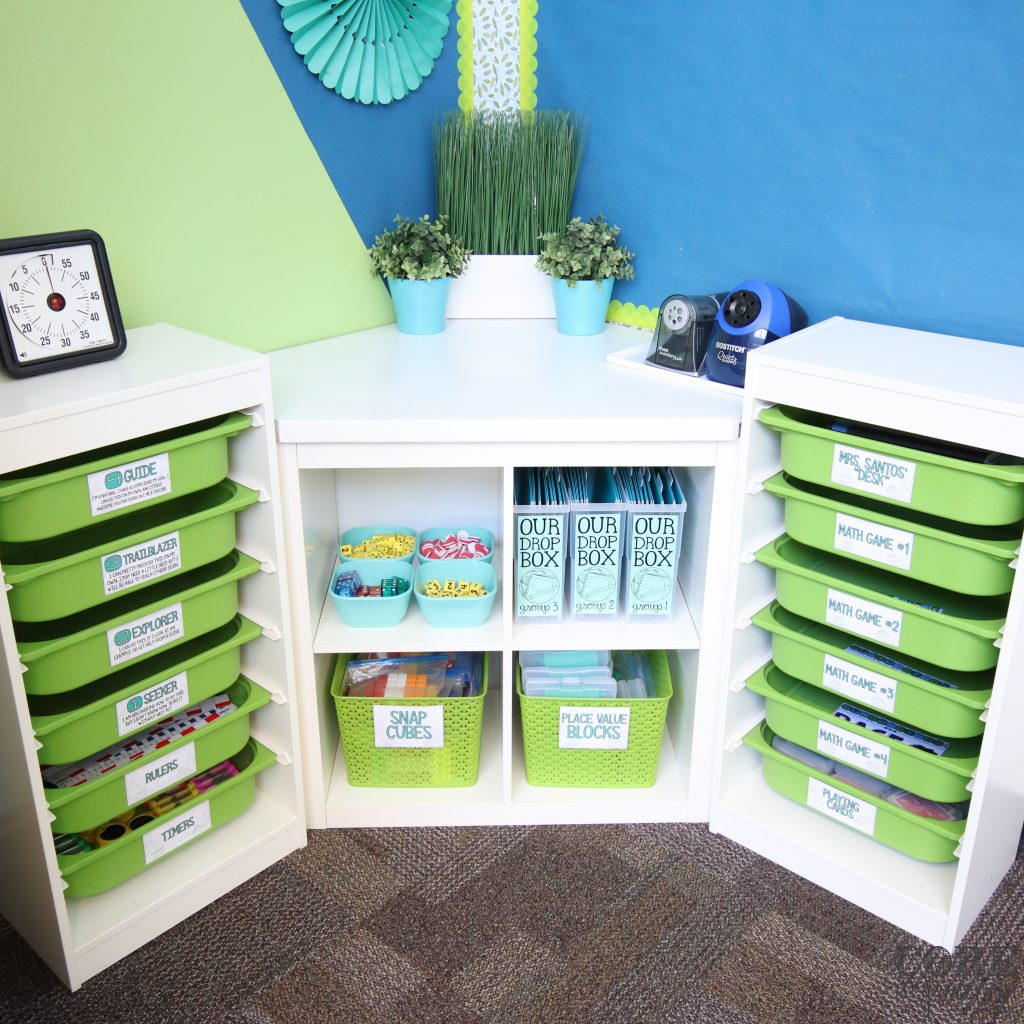
Of course, organization systems are not one-size-fits-all, and you may need to try a couple of approaches to organizing your math games before you find the system that best fits the space you have available. To help inspire your organization mission, I’ve curated several ideas from teachers who messaged me on Instagram with pictures and descriptions of their approach to organizing the games they use for the hands-on rotation of Math Workshop. Their ideas are woven in with a few approaches I’ve tried myself in a list that I hope will help you as you organize your own math games.
Organizing Your Math Game Station
Math Game Drawers
Place instructions and any unique game cards for each math game in separate drawers. Students can gather their game instructions from the drawers, and find any related math manipulatives from nearby bins that hold the manipulatives in bulk.
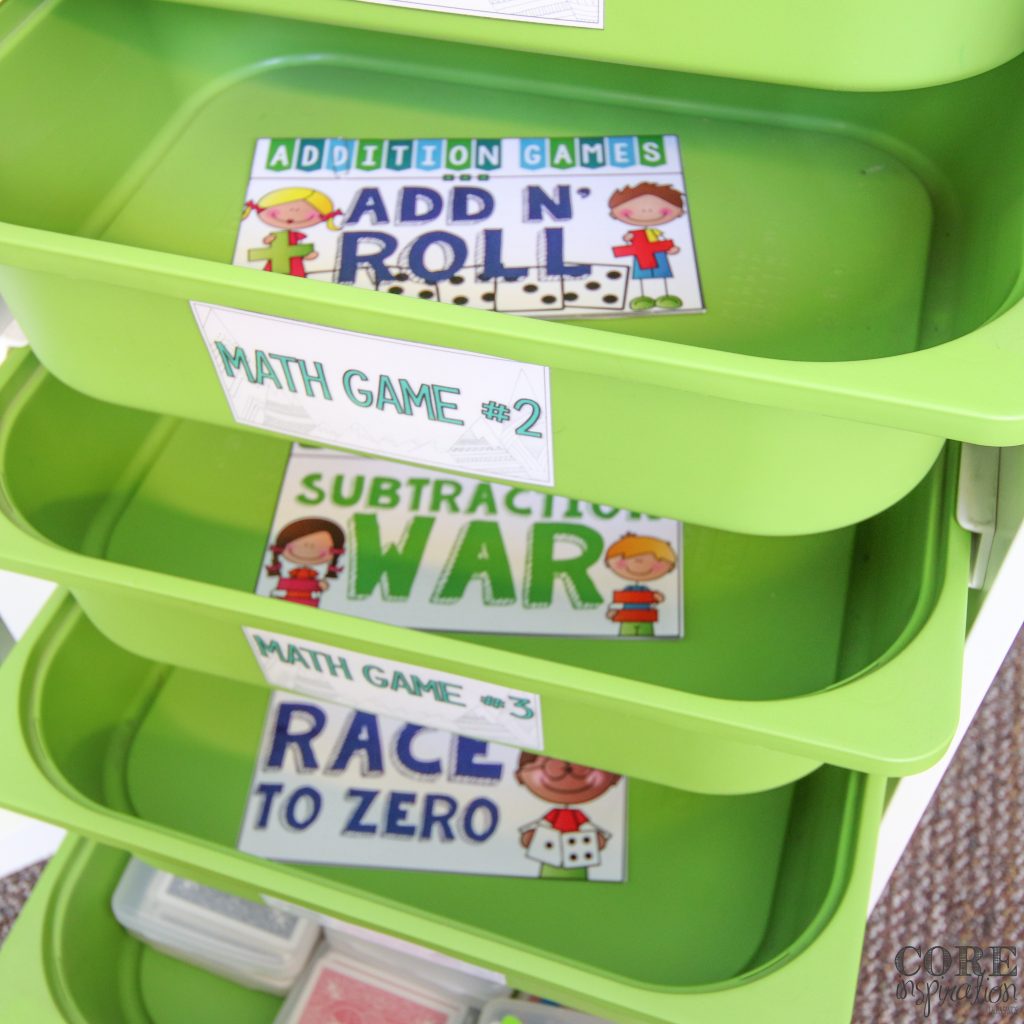
Handmade Math Game Pockets
Place game instructions inside folders made from laminated card stock or construction paper with the name of the game displayed on the outside. Use velcro dots or blue painter’s tape to hang these pockets on cabinet doors. Any math manipulatives or unique game cards can be stored in bulk in boxes or bins nearby. If you have one of these premade hanging pocket folders, you can rotate games in and out of each pocket as another space-saving option.
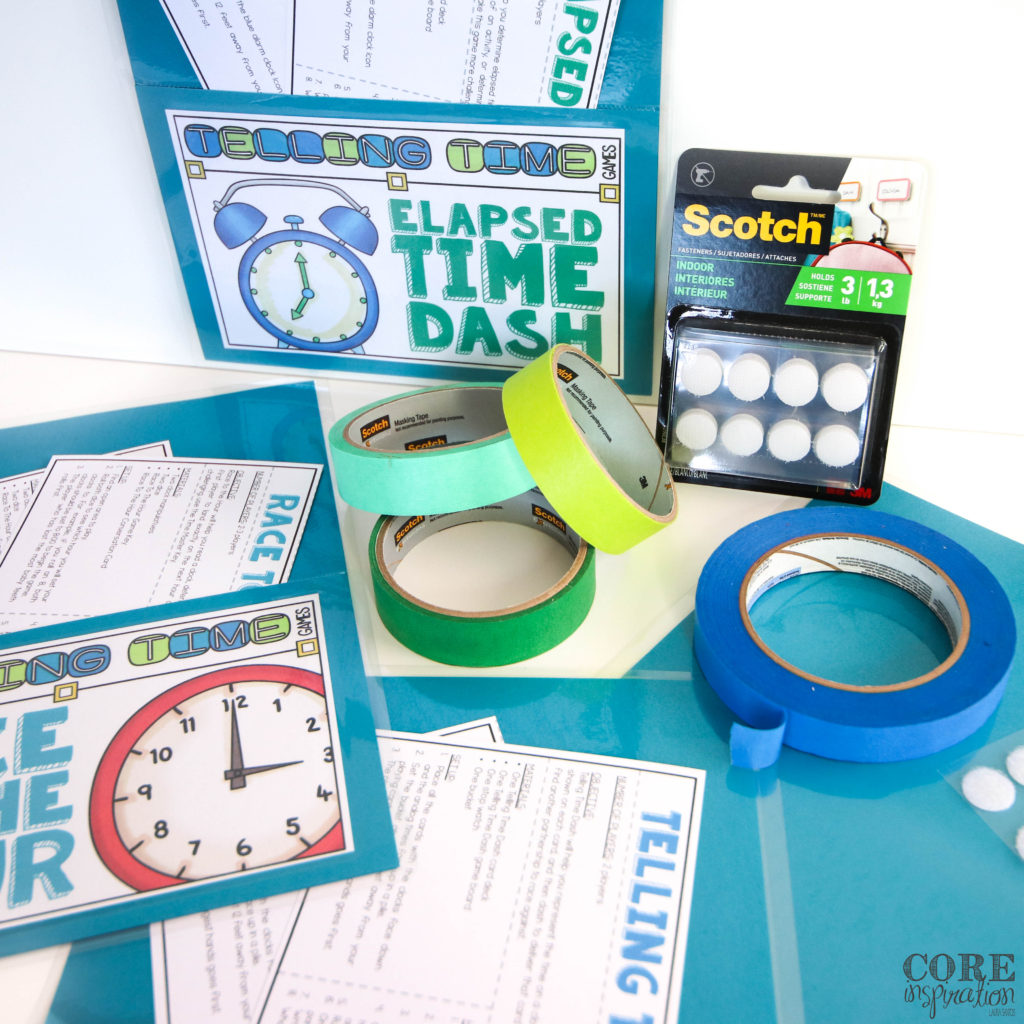
Math Game File
Use a file bin to store your math game instruction cards. You can use a smaller file bin and rotate games in and out, or store all the instruction cards in a larger crate with an individual file for each game. If you’re using a larger file, create a section for “Current Math Games” and a “Math Game Archive” section where games that don’t align with your current unit of study are kept.
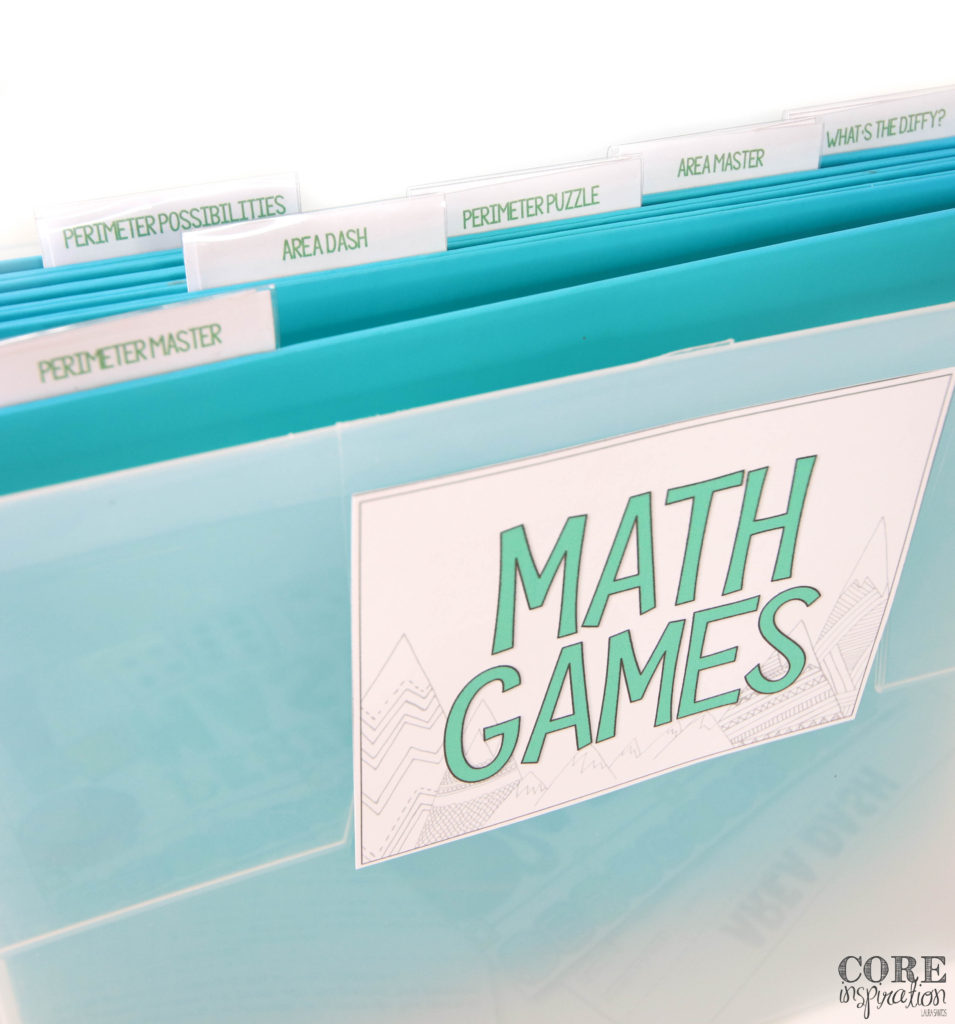
Math Game Bins
If you have a lot of shelf space in your classroom, then creating math game bins might be a good fit for you. Place your game instruction cards in magazine or book bins on your shelf. If a particular game has unique game cards, stash the cards along with the instructions in a plastic folder before placing them inside the bin to boost organization. Any larger math manipulatives can be stored in bulk in boxes or bins nearby.
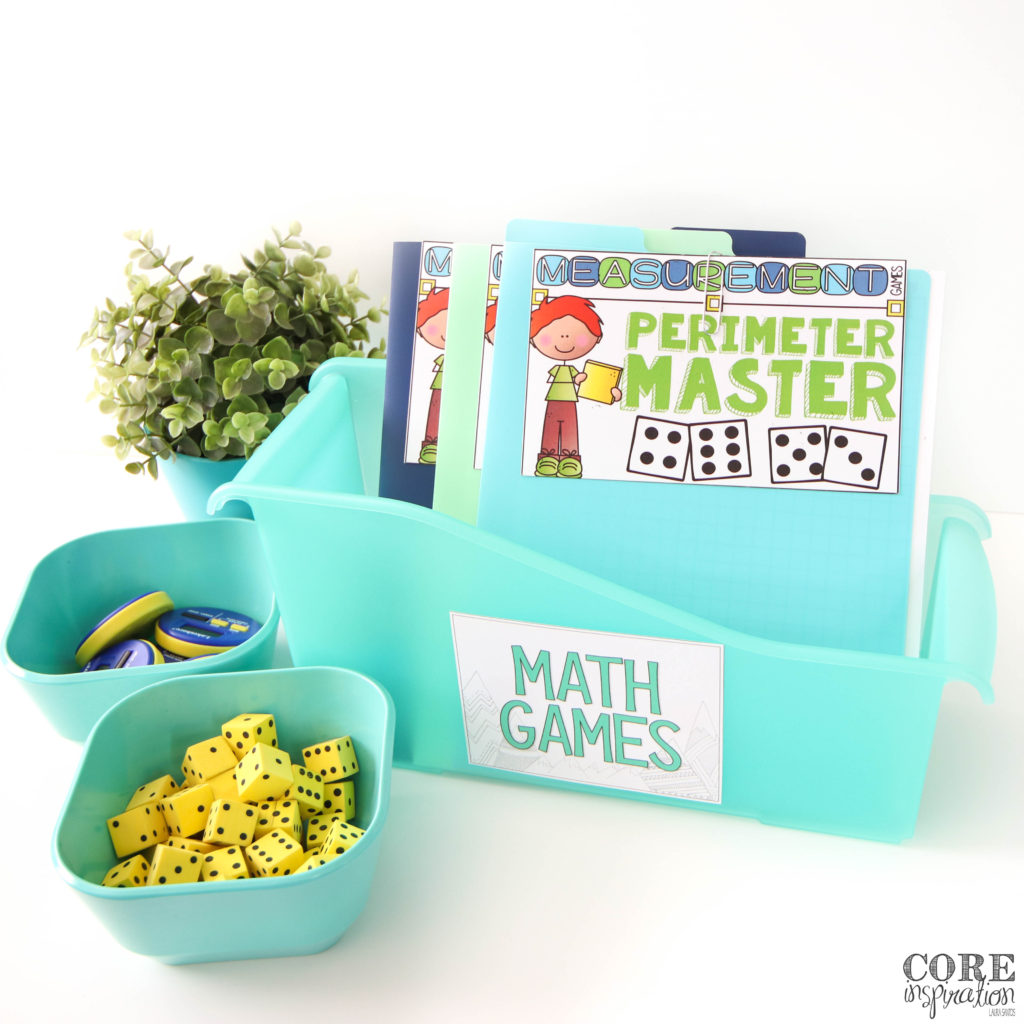
Math Game Cubbies
Have an overabundance of whiteboards in your classroom? I feel your pain; I used to teach in a small portable with four huge whiteboards. Using magnetic bins to store your game instruction cards may be a handy solution for you. You can also use this removable plastic velcro to hang non-magnetic bins on whiteboards or other smooth surfaces in your classroom.
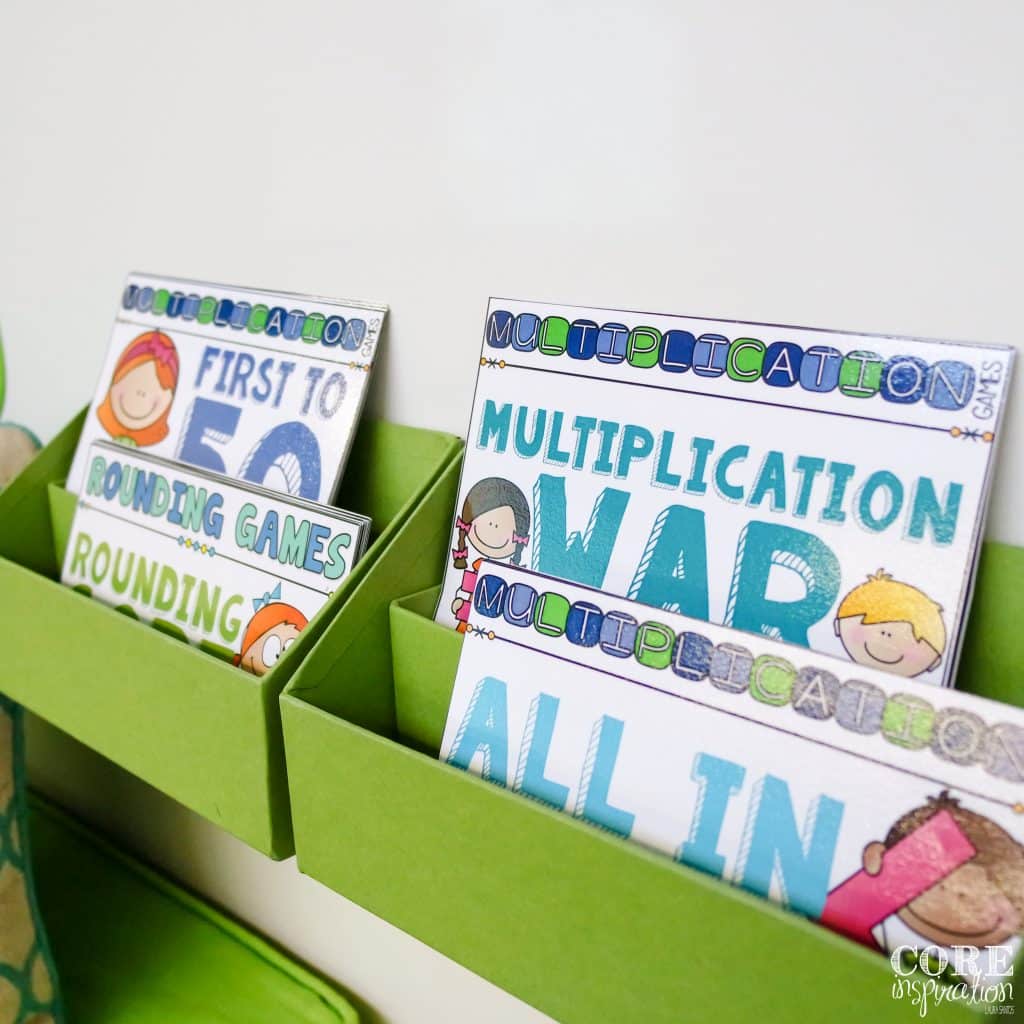
Math Game Kits
If you’d rather store the manipulatives needed for your games with the game instructions, then creating math game kits using plastic boxes or plastic bags might be a solid option for you. These kits make selecting games a breeze because students don’t need to huddle around the math manipulatives to gather the supplies for the game they’re playing. When it’s time to cycle to a new set of games, lay out all your kits and restock them with the supplies needed for the games your students will be playing. I recommend having extra manipulatives in a place that’s easy for students to access in case they need to replenish a missing item.
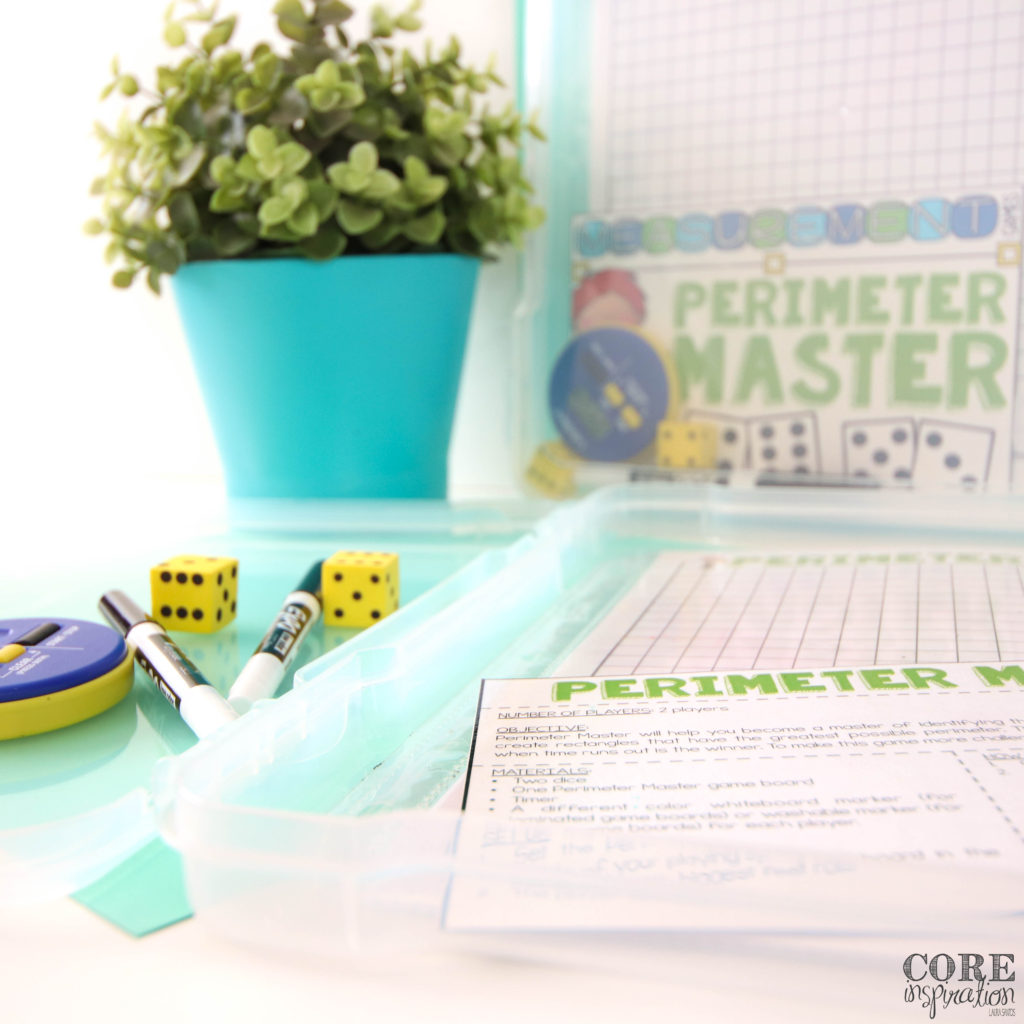
Math Game Caddies
If you’re really looking to expedite the time it takes students to gather their math game supplies and settle in with a partner, creating caddies with every supply they may need is another option. Your caddies can hold instruction cards for all the games you currently have in rotation, along with all the relevant supplies for each of those games. This makes it easy for students to grab a caddy, find a spot to play, and make decisions with their partners about which game they’ll play. Caddies are a great fit for classes struggling to make efficient transitions during Math Workshop.
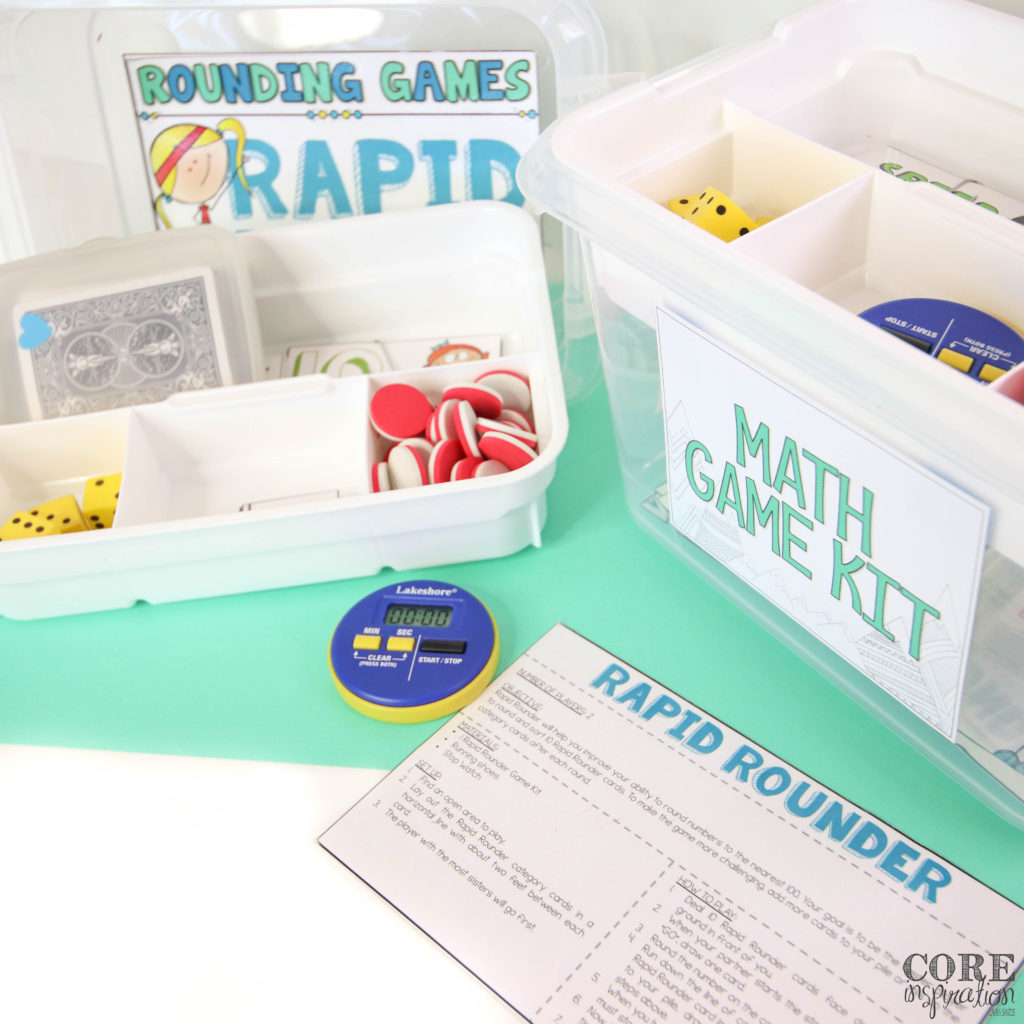
Organizing Your Math Game Archive
Many of these organization options result in the need for space to store math games that are not part of your current unit. Keeping your archive of games easy to navigate makes switching games a breeze. Here are some ideas to inspire your behind-the-scenes math game organization.
Math Game Crate
Yes, I mentioned this above, and it’s definitely the most low-maintenance option. Use a large file crate to store all your instruction cards. If you’re using a larger file, create a section for “Current Math Games” and a “Math Game Archive” section where games that don’t align to your current unit of study are kept. No need to find cabinet space for this method; just find a spot on a countertop or a shelf in your classroom where you and your students can easily access your math game collection at all times.
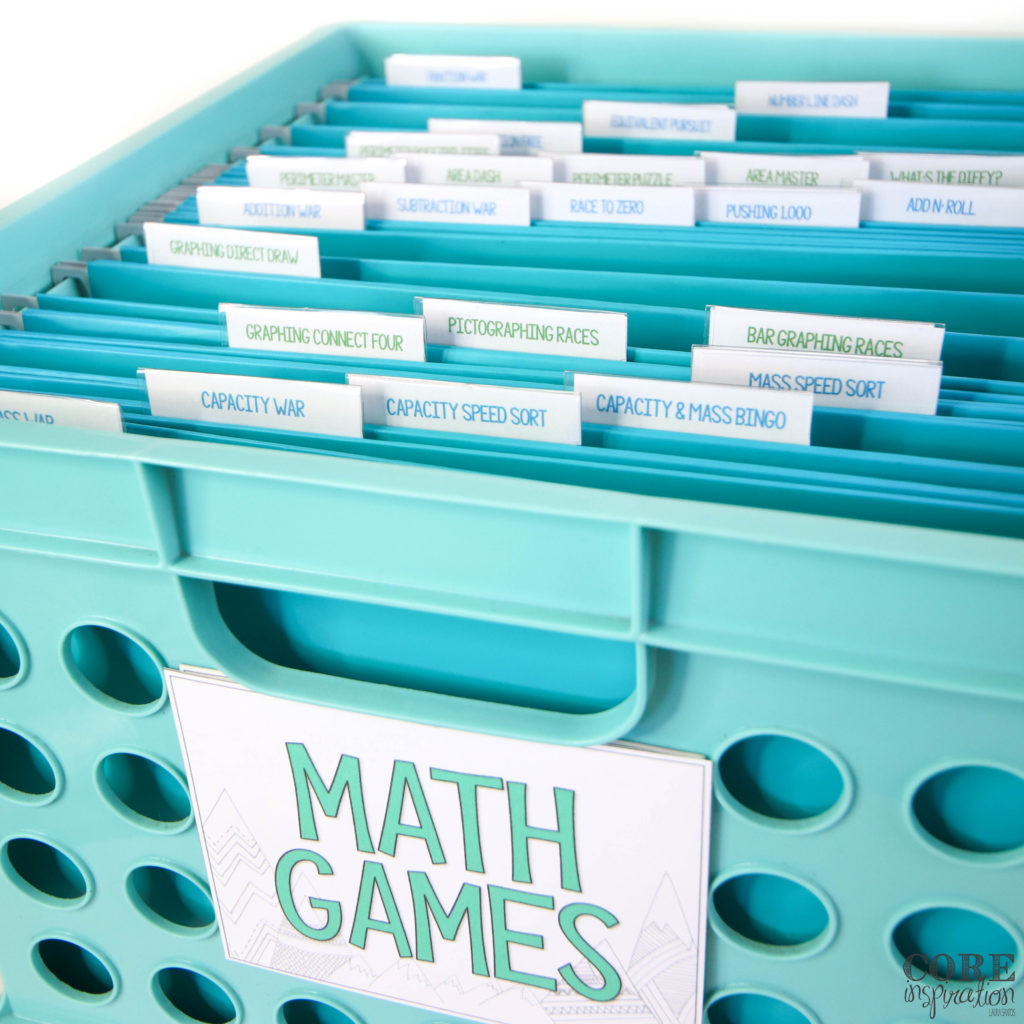
Math Unit Boxes
Storing games with all the other relevant materials together in bins for each unit makes it easy to pull everything you need for your current unit of study. Keep the bins for upcoming and past units in your cabinet so they’re out of sight, and pull the bins for your current units to a space where they’re easy to access daily. As you teach a unit, these bins can act as a catch-all for any resources you used and any new resources you gathered.
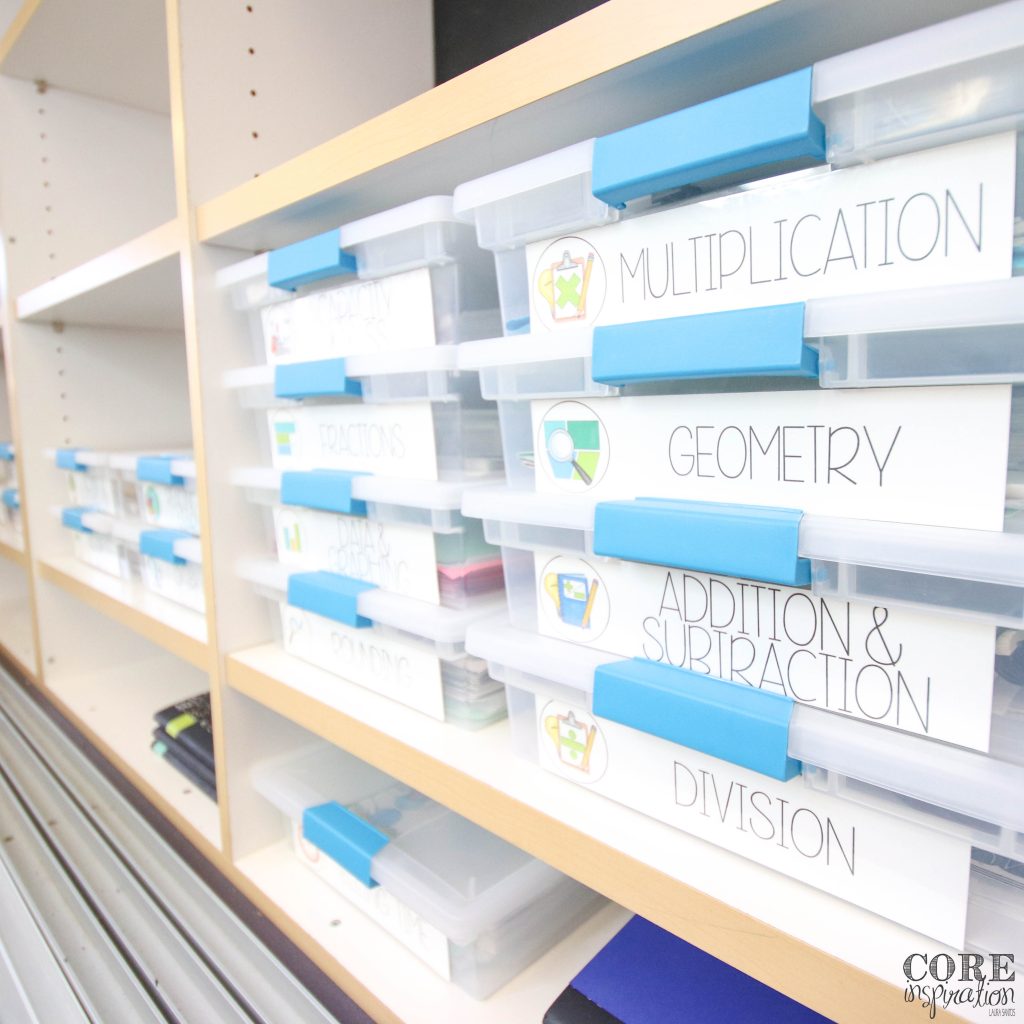
Math Game Binder
Stashing your math games in plastic folders or sheet protectors within a binder is a more condensed storage option, but it has the same benefits as the unit boxes described above. You may consider creating a binder for each unit, or you may prefer to have one large binder with every game in one place.
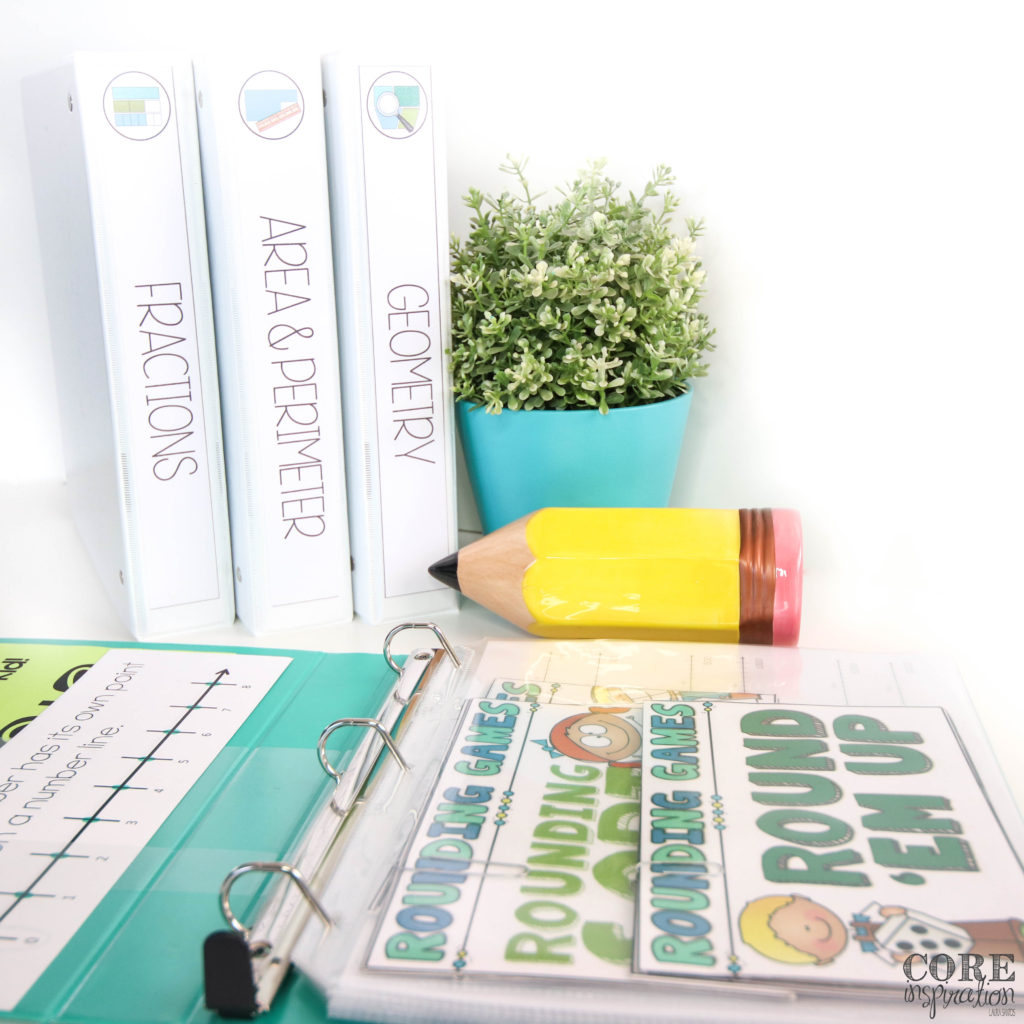
Give These Organization Tips a Try in Your Classroom
I hope this list of ideas inspires you as you get your own math game station organized. Comment below with which method you’re using to organize math games in your classroom or any tips you have related to math game storage.
If you’re looking for more tips about organizing your supplies for Math Workshop, check out these posts:
- Organizing Math Problem Solving Task Cards in Your Classroom (coming soon)
- Organizing Math Projects in Your Classroom (coming soon)
For more information about using games during Math Workshop, you may find these posts helpful:
- Tips for Making Math Games a Success
- Introducing Math Games During Week 2 of Math Workshop
- 3 Ways to Challenge Your Advanced Students During Math Workshop
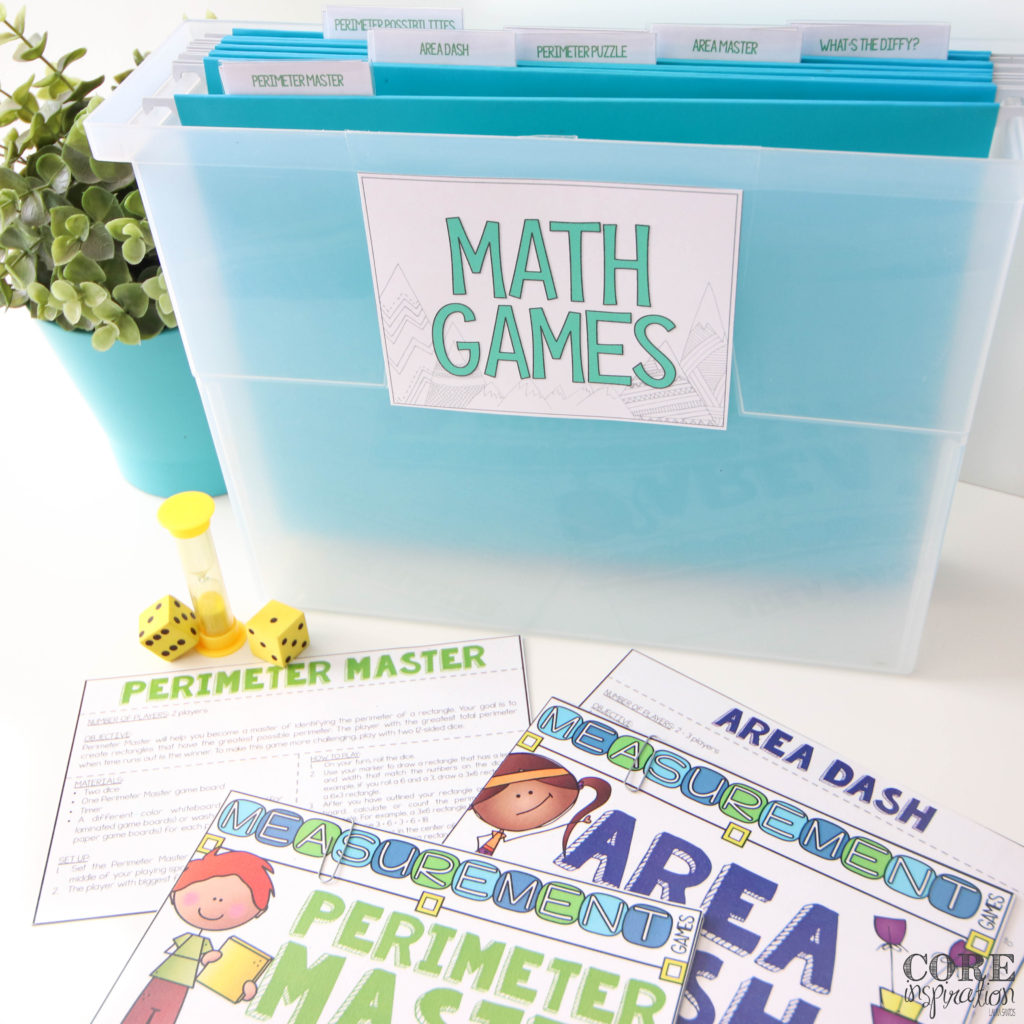
If you are interested in using any of the supplies or resources featured in this post, this list will make your search a little easier (affiliate links included):
- Second Grade Math in Motion Games
- Third Grade Math in Motion Games
- Math Workshop Transition Deck
- Ikea Drawers
- Velcro Dots
- Blue Painter’s Tape
- File Crate
- Iris Small Open Top File Box
- Plastic Folders
- Magnetic Bins
- Removable Plastic Velcro
- Boxes for Math Game Kits
- Caddy from the Container Store
- Sterilite Clip Top Boxes
- Avery Sheet Protectors
- White Binders
- Featured Math Manipulatives
This post contains Amazon Affiliate links to make it easier for you to find the art supplies shared in this post. To see all my favorite Amazon finds, visit my Amazon Influencer page here.


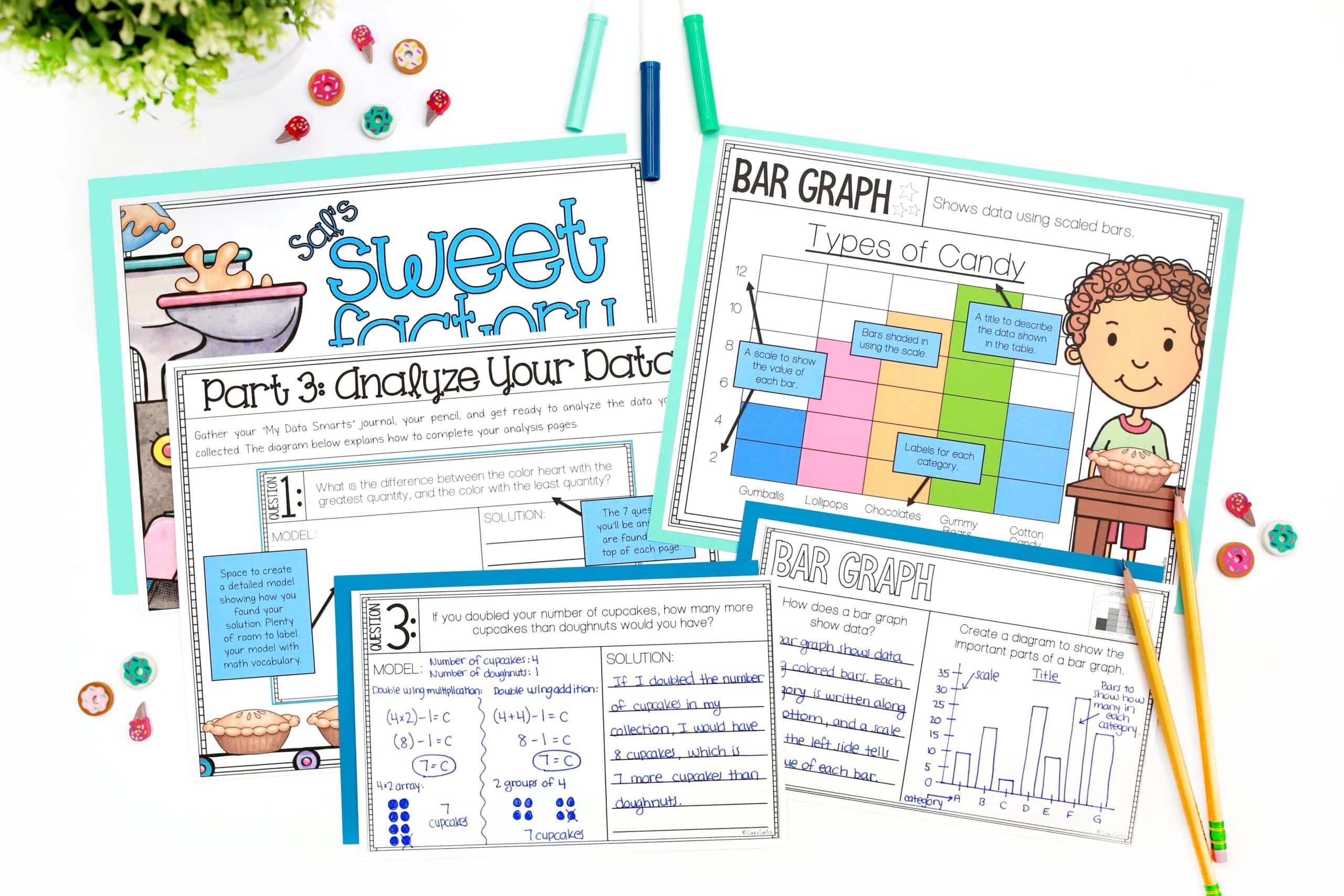
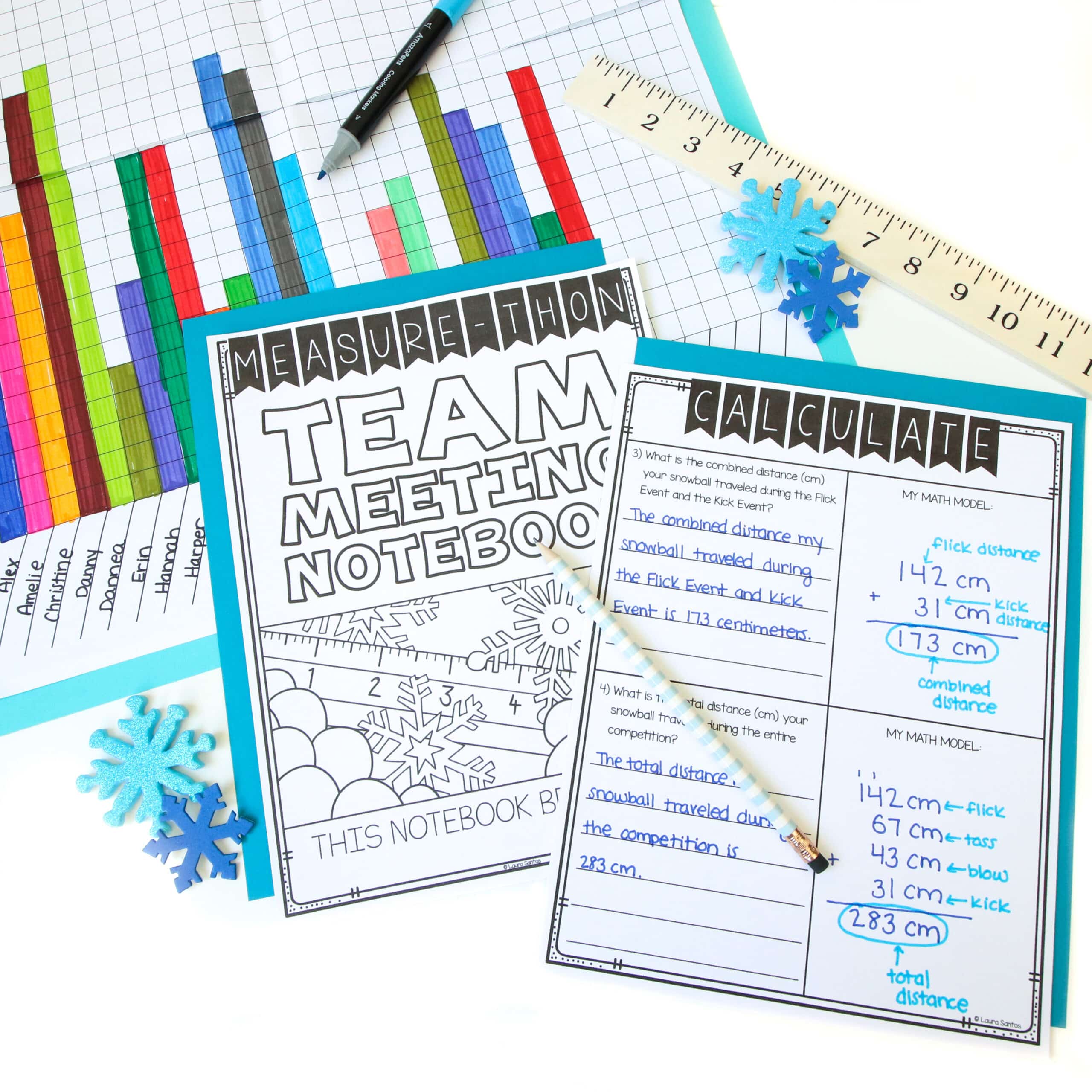

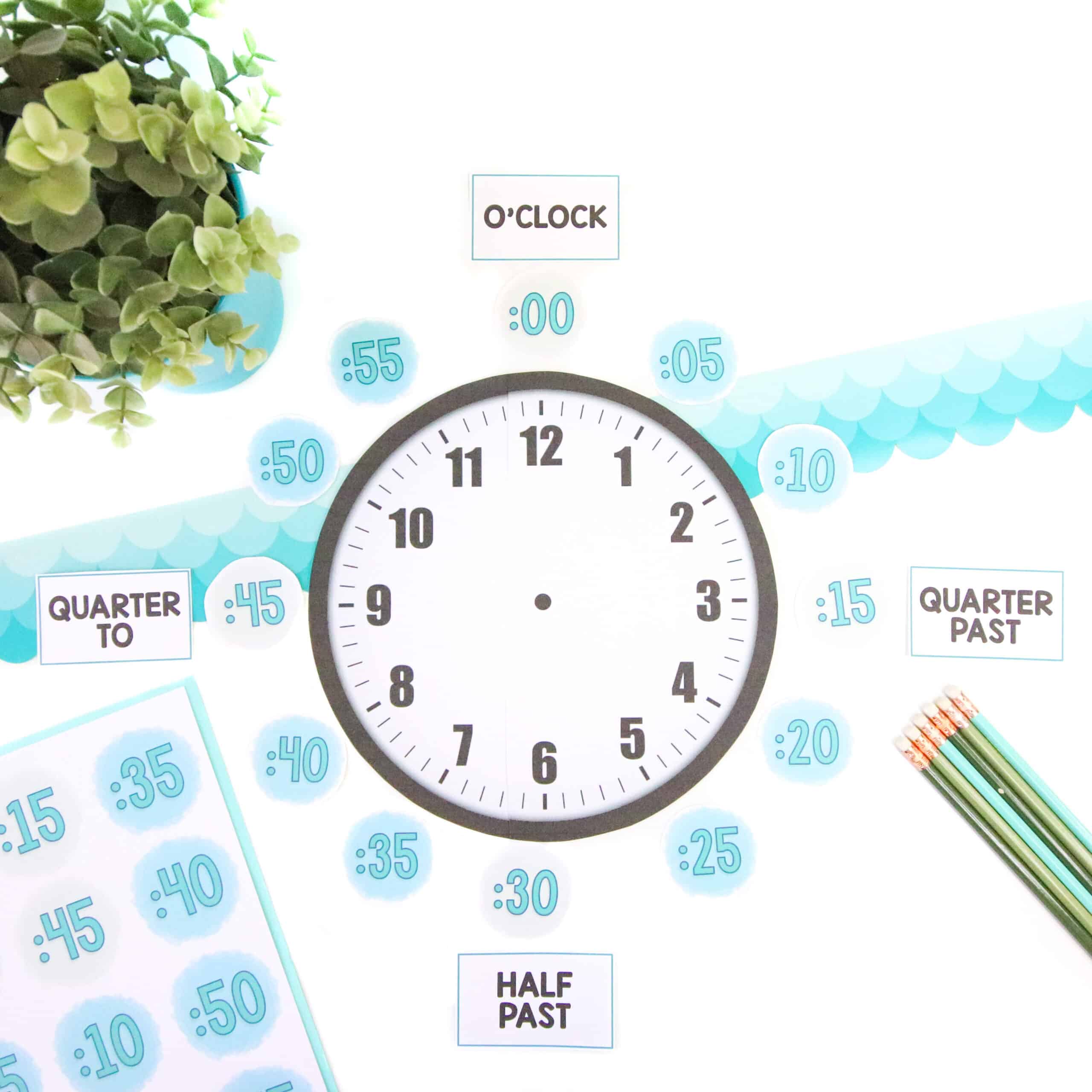
4 Responses
This is wonderful, thank you Laura! I have your 3rd grade Math in Motion games (which I love) and can’t wait to get them organized. I bought the math unit boxes you suggested, do you happen to have the unit labels I see on your boxes available for purchase? If not, can you tell me what font you used? Beautiful!
Hi Lisa,
Thank you for reaching out, and for supporting my TPT shop. I am so grateful! 🙂 The unit labels are a gift when purchasing the year long enrichment bundle. The font I used for them is KG Sorry Not Sorry.
Warmly,
Laura
Thank you for all the wonderful ideas. It has been very instrumental in establishing a structure. Where did you get the corner storage unit that you’ve posted as your first picture for this post? What a great storage unit for the supplies.
Thank you for the kind comment Nakea! The corner storage unit is three different pieces from Ikea that are nudged together informally…then my brother created a top piece that lifts on and off to make it a whole corner unit. 🙂